Sep 19, 2017
Ten Books: 2017, Volume 1
Another recounting of my recent bibliophiliac activity. This installment covers ten books enjoyed in early 2017.
Placements on my Great Novels , Great Sci-fi and Fantasy Novels and Great Crime Novels lists are identified with brilliantly conceived and executed color-coded rankings.
—
-
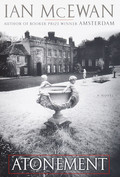 29 Ian McEwan - Atonement (2001)
29 Ian McEwan - Atonement (2001)
This is an extraordinary novel! It is my first read of 2017, and I will not be surprised if it is my favorite of the year—winner of the Man Bachster Prize. That is a judgment I shouldn’t make just hours after reading through its emotional conclusion, but it will certainly stick with me for a long time. I can’t recommend it highly enough, but I can say little about why I do. No spoilers here.This novel was adapted for a 2007 movie. I don’t want to see it anytime soon, if ever, though I can imagine it might make a pretty good film. I’d rather remember the book, at least for awhile yet.
An English country estate is the setting for the first third of the book. It and the family relationships played out there reminded me of the same in Waugh’s Brideshead Revisited. There likely is not much to this.
As a 2001 novel, Atonement should not qualify for my Great Novels of the 20th Century list, but it was included on a few of my sources and I failed to edit it out. Oh well.
-
 Douglas Adams - The Long Dark Tea-Time of the Soul (1988)
Douglas Adams - The Long Dark Tea-Time of the Soul (1988)
The second novel featuring detective Dirk Gently. Again, I can only lament that Adams’s life was cut short and there weren’t ten more books in the series. We wuz robbed.What can I say about this one? I guess “madcap entertainment straight from the gods” is one thing. Not since Richard Wagner have we seen such an exciting portrayal of the Norse gods. Thor, Odin, and Valhalla seem to be unlikely players in a tale of the murder of an English software mogul, but in Douglas Adams’s world, nothing could be more probable.
-
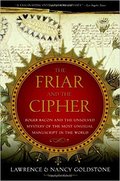 Lawrence and Nancy Goldstone - The Friar and the Cipher (2005)
Lawrence and Nancy Goldstone - The Friar and the Cipher (2005)
The subtitle Roger Bacon and the Unsolved Mystery of the Most Unusual Manuscript in the World describes this book’s focus on the Voynich Manuscript and speculation that it was written by Roger Bacon in the 13th century. Although this very unusual manuscript, which came to scholarly attention in 1912, has been attributed to Bacon at various times by some enthusiasts of the tantalizing medieval figure who is often lauded as a pioneering scientific thinker, it is written on vellum carbon-dated to the 15th century. So, among the many reasons scholars reject the Bacon hypothesis, the physical manuscript is certainly too late to be Bacon’s. The authors remain true believers for unconvincing reasons. Still, their story of the many attempts to break its unique code are interesting. But the biography of Bacon (which comprises the bulk of the book) is far more so. It would have been better to read a standard, more reliable biography, and I hope to do so soon.Late breaking news from The Atlantic: a short account of the latest purported solution to the Voynich mystery.
-
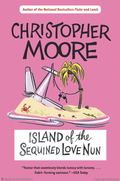 Christopher Moore - Island of the Sequined Love Nun (1997)
Christopher Moore - Island of the Sequined Love Nun (1997)
An absurd fantasy romp set on a small island in Micronesia. Improbable and comic. Fans of Carl Hiaasen’s Florida novels will find this entertaining and fun. I am a fan of Hiaasen and I did, anyway.This novel incorporates some fanciful parallels to Hamlet, but none of its soliloquies or sword fighting.
-
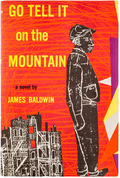 57 James Baldwin - Go Tell It on the Mountain (1953)
57 James Baldwin - Go Tell It on the Mountain (1953)
An autobiographical novel by a giant of 20th century African American literature. It tells the (fictionalized) story of the author’s upbringing in a suffocating Pentecostal church and with a fanatical and cruel stepfather. It isn’t a pretty picture.Baldwin has been an important but divisive figure. Ultimately, he found Paris to be a more welcoming home than America for an artist of his race, sexual orientation, and temperament. I want to learn more about Baldwin, and look forward to seeing the recent bio-pic, I am not Your Negro.
-
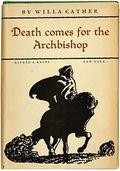 73 Willa Cather - Death Comes for the Archbishop (1927)
73 Willa Cather - Death Comes for the Archbishop (1927)
A sort of fictionalized hagiography of two real-life priests sent to the brutal, untamed American Southwest. There they were tasked with assuming American control of the diocese of (roughly) New Mexico, previously operated by a Mexican branch of the Church. Their mission: ministering to the Hopi and Navajo. The author presents the two French priests—Latour and Vailliant (not the real names of the pair upon which the story is based)—as good and sincere, and the Mexicans they replaced as crooked and cynical. The Hopi and Navajo are portrayed sympathetically. Real-life figures such as Kit Carson appear.The narrative is highly episodic, a succession of short stories and long anecdotes. It never really grabbed me. Cormac McCarthy without the grit and grime. My sympathies lie squarely with the native peoples, and knowing how things turned out for them, I couldn’t keep Graham Parker’s “Syphilis and Religion” out of my head.
-
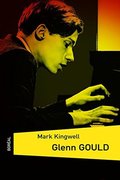 Mark Kingwell - Glenn Gould (1999)
Mark Kingwell - Glenn Gould (1999)
This slight volume is a part of the series Extraordinary Canadians. Glenn Gould certainly qualifies as an extraordinary Canadian. In fact, let X equal any country more populous and less self-deprecating than Canada, and Gould would qualify as an “extraordinary Xian” just the same. Does this book qualify as biography? Not quite, I think, though I am not saying it is not worth reading.The author is clear in his introduction about his intentions. He is interested in the philosophical underpinnings of Gould’s art and offers a kaleidoscopic view of his life and career. In 21 chapters each focused on one theme of Gould’s thought—Play, Time, North, etc—Kingwell waxes philosophical with at least some relationship to his subject. It is an interesting, thought-provoking approach and is comparable in some respects to the enigmatic and beautiful Thirty Two Short Films About Glenn Gould. Both, it seems to me, are likely to be of interest chiefly to those already familiar with Gould (beyond his recordings).
-
 2 Agatha Christie - The Murder of Roger Ackroyd (1926)
2 Agatha Christie - The Murder of Roger Ackroyd (1926)
I have been a fan of mystery novels and stories my entire life. Dusty English mysteries in particular. I have fairly worn out two of the pioneers of the English amateur sleuth, Conan Doyle’s Sherlock Holmes and Sayers’s Lord Peter. Additionally, I’ve read all of Chesterton’s Father Brown and much of Wodehouse’s Wooster & Jeeves. But I’ve known Agatha Christie’s Hercule Poirot and Miss Marple only by reputation and a smattering of movies and PBS television programs. This reading of Ackroyd is my first foray into Christie’s deep catalogue.In this story, Poirot has only just retired from detective work to a quiet little English village. He does not desire to be back in the game. But when he is recognized, and when a murder with a possible relationship to a recent suspicious death occurs, he is pressed back into action. The botany must wait. A local doctor, eager to serve as Poirot’s Watson narrates the tale. One culminating in a fiendishly clever twist ending. Too clever? Some have thought so, but the novel consistently ranks at or near the top of “greatest mystery novel” lists (who would pay any mind to lists of that sort?).
-
 8 Kurt Vonnegut - Cat’s Cradle (1963)
8 Kurt Vonnegut - Cat’s Cradle (1963)
For a self-described “big fan” of Vonnegut’s, I come very late to this one—one of his best-regarded books. No real reason for this beyond my zig-zagging, Marxist approach to reading. (Marx brothers, I mean.) I’ve read Slaughterhouse-Five three times, the novels The Sirens of Titan and Mother Night, short stories, and essays. But not until now the novel from which I lifted “ice nine” for use in one of my crossword puzzles. How big a fan am I really?A bigger fan each time I do manage to read him, and that’s a fact.
I can’t say anything worthwhile in a paragraph about this novel. It’s an indictment of science without conscience and of greed. A silly send up of religion and superstition. No time travel, but a crazy science fictiony substance. An erotic invention involving the co-mingled soles of the feet. Humor.
-
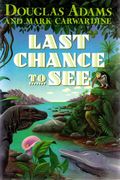 Douglas Adams and Mark Carwardine - Last Chance to See (1990)
Douglas Adams and Mark Carwardine - Last Chance to See (1990)
Mark Carwardine is a zoologist and Douglas Adams was a writer and talented loony. Between 1985 and 1989 the pair traveled the world on the BBC’s dime in search of nine critically endangered animal species. Their adventures and the plight of the animals were the basis for a radio series. A year later the pair published this book in which seven of the nine journeys are recounted in Adams’s inimitable style. Carwardine provided expertise and sanity.For conservationist fans of Adams, this book is pure gold!
(I have just learned that twenty years after the original events, Carwardine with Stephen Fry in the Adams role returned to update the statuses of the endangered animals for a BBC television series. A YouTube video excerpted from the series, in which Carwardine hilariously goes the species-preservation extra mile, went “viral.”)
| DATE | TITLE |
| 12/09/2019 | Books 2019: #2 Dozen Really Matter? |
| 05/20/2019 | Why Not Both? |
| 04/23/2019 | Books 2019: #1 Take Ten |
| 04/15/2019 | Books 2018: #31 - #37 |
| see also ... | 113 Great 20th Century Novels |
| 46 Great 20th Century Crime Novels | |
| 45+ Great 20th Century SciFi/Fantasy Novels | |
| Books Read (2008-) | |
| Index of Book Posts |
-
Categorically
- Home
- Index
- ALS Bites
- Birding
- Blather
- Bloviation
- Crosswords
- Unbelievable
- Vidiocy and Other Stolen Stuff
Goodies

